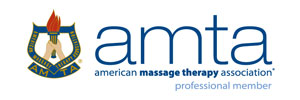A mother came in with her two-year old son. He had been struggling with some developmental
challenges in his legs. Walking seemed fine, but whenever he tried to run he looked
uncoordinated.
The assistant instructor ‘Rolfed’ the child for four or five minutes, then set him
down. The boy took off running around the perimeter of the large classroom — his old pattern now
replaced with giggles and confidence. Finishing his trek, the boy made a beeline for the instructor
and threw himself in her lap, thanking her for his newly found legs and athletic prowess. This was
the scene at a children’s clinic that was part of my training in Rolf Structural Integration.
Whether we are the two-year old runner described above, or a long time marathon athlete, every
step of a run sends ‘ground impact’ into our bodies. The alignment and posture that we bring to
a run will greatly determine not only the toll this impact has, but also the effciency and speed of
our run.
If you have one hip that is higher than the other, or the feet turn out or in, the immediate
negative effects are easy to imagine. Overtime, the body will have to compensate or adjust.
Muscle groups like the hamstrings may become extremely tight, and hamstring injuries can
become chronic. The IT bands on the sides of the legs will morph, resembling more bridge cable
than human flesh.
The body has a series of ‘shock absorbers’ that especially for runners need to be in good
working order. Starting with the feet, if the arches are too high or flat, they cannot diffuse the
the impact. This will contribute to the ‘binding’ of the lower leg bones, together leading to knee
pain, pain killers and often surgery and most commonly, shin splints. If one or both of our feet
turn out when we walk they will show the same distortion when we run.
If you watch people from cultures where sitting on chairs is not so universal, you might notice a
greater ease and grace to their running.. This is because an important core muscle, the psoas, that
connects the lumbar spine with our legs, has not been geared out of participation by tightened
and shortened muscles like the quadriceps.
Fortunately, there is a solution. Structural Integration bodywork (aka Rolfing) has been used by
athletes, from Sunday warriors to Olympic medalists. Linda Gill, former UCLA cross country
and track athlete, tried Rolfing to recover from a nagging hamstring injury. After several sessions
she noted, “Rolfing really helped my overall body mechanics. The tensions I carried in my
shoulders is gone, my hamstrings feel great and my breathing became easier as my chest opened
up.”
How does Structural Integration achieve such amazing results? By identifying where the
connective tissue sheets that wrap around all our muscles have shortened. By applying hands-
on pressure to the shortened wrappings, the body is brought back into optimal alignment. Not
only are old injuries resolved and the likelihood of new ones reduced, but athletic performance
is significantly improved and recovery time decreased.
These dramatic changes are achieved through a comprehensive ten session series. According to Mike Fanelli,
running coach from Marin, CA, “Rolfing has taken 10 years off my legs. Before Rolfing, I had to take four or five
days off after a hard run. Now, I’m back up to running 50 mile weeks.”
Faster than a pair of the best running shoes. More powerful than the most potent muscle building
protein powder– It’s Structural Integration bodywork!
by Robert Auerbach Certified Advanced Practitioner
You can schedule an appointment with Bob and Save $30 off your first session through May 31, 2015





